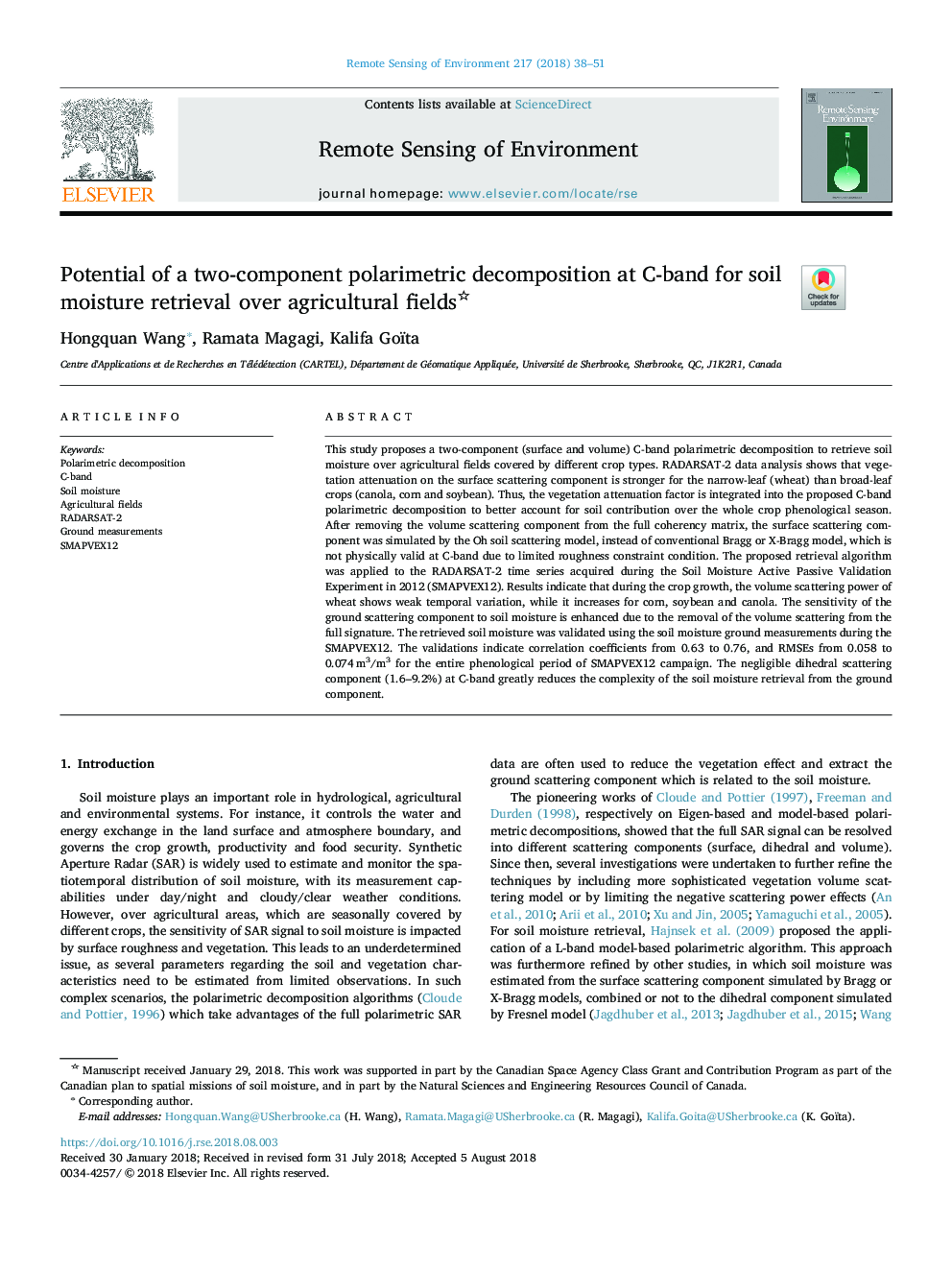| Article ID | Journal | Published Year | Pages | File Type |
|---|---|---|---|---|
| 10113953 | Remote Sensing of Environment | 2018 | 14 Pages |
Abstract
This study proposes a two-component (surface and volume) C-band polarimetric decomposition to retrieve soil moisture over agricultural fields covered by different crop types. RADARSAT-2 data analysis shows that vegetation attenuation on the surface scattering component is stronger for the narrow-leaf (wheat) than broad-leaf crops (canola, corn and soybean). Thus, the vegetation attenuation factor is integrated into the proposed C-band polarimetric decomposition to better account for soil contribution over the whole crop phenological season. After removing the volume scattering component from the full coherency matrix, the surface scattering component was simulated by the Oh soil scattering model, instead of conventional Bragg or X-Bragg model, which is not physically valid at C-band due to limited roughness constraint condition. The proposed retrieval algorithm was applied to the RADARSAT-2 time series acquired during the Soil Moisture Active Passive Validation Experiment in 2012 (SMAPVEX12). Results indicate that during the crop growth, the volume scattering power of wheat shows weak temporal variation, while it increases for corn, soybean and canola. The sensitivity of the ground scattering component to soil moisture is enhanced due to the removal of the volume scattering from the full signature. The retrieved soil moisture was validated using the soil moisture ground measurements during the SMAPVEX12. The validations indicate correlation coefficients from 0.63 to 0.76, and RMSEs from 0.058 to 0.074â¯m3/m3 for the entire phenological period of SMAPVEX12 campaign. The negligible dihedral scattering component (1.6-9.2%) at C-band greatly reduces the complexity of the soil moisture retrieval from the ground component.
Keywords
Related Topics
Physical Sciences and Engineering
Earth and Planetary Sciences
Computers in Earth Sciences
Authors
Hongquan Wang, Ramata Magagi, Kalifa Goïta,
